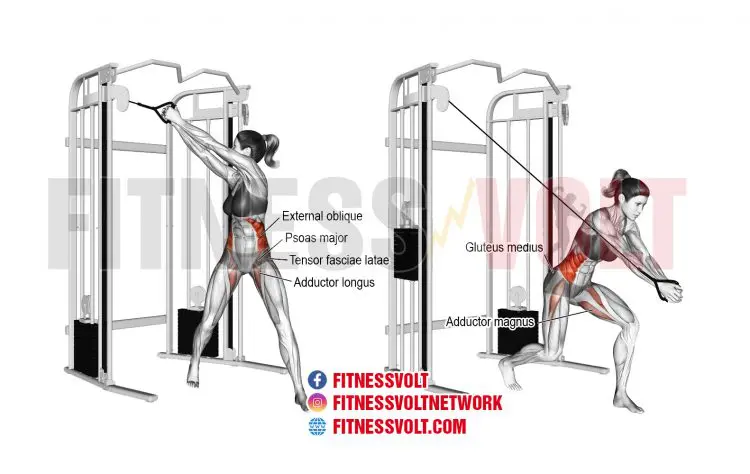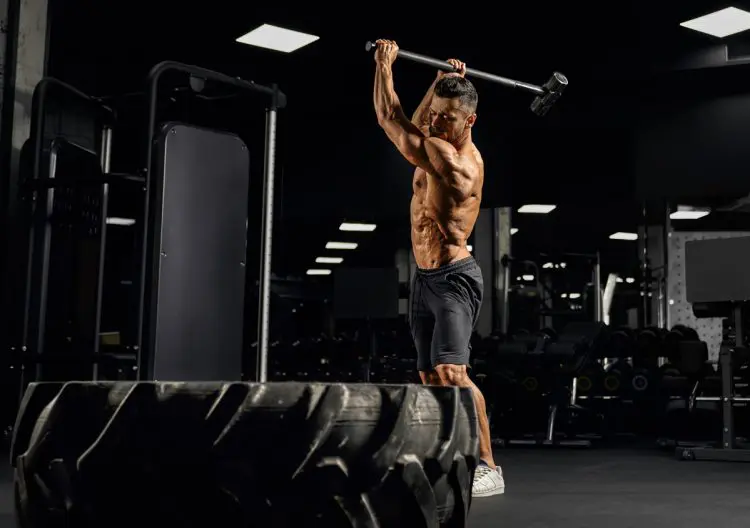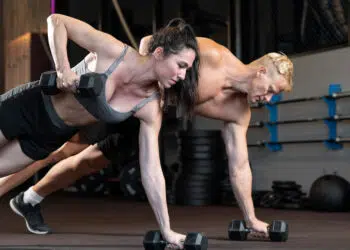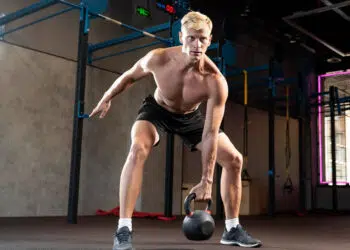Thanks to our three-dimensional world, we can navigate through the wilderness without bumping into every obstacle in our way. Although leaping onto flag poles and jumping on monsters might be thrilling at first, living in the two-dimensional world of Mario would lose its charm real soon.
Living in the 3D world has its complications. You need to train your body and mind to cope with all the sensory stimulations coming your way. Let us shift our focus to training programs. Most people follow a training routine that targets only two-third of the human body’s range of movement pattern.
While such a training program would be great for our beloved Mario, it is not ideal for us. Following such a fitness routine will lay the ground for muscular imbalances and can even cause injuries.
If all of this sounds too complicated, do not worry, we will break it down for you.
The 3 Planes of Motions
The human body can be divided into three planes of motion: sagittal, frontal, and transverse. In each plane, several movements occur at the joints.
Level Up Your Fitness: Join our 💪 strong community in Fitness Volt Newsletter. Get daily inspiration, expert-backed workouts, nutrition tips, the latest in strength sports, and the support you need to reach your goals. Subscribe for free!
Imagine each plane as a plate of glass cutting the body into equal halves. Before you get too excited, this is not a ‘Saw’ sequel. Please put the axe away. Thanks.
Let’s dive deeper into the 3D world:
1. Sagittal Plane
Cuts the body into left and right halves. It includes forward and backward movement. Most exercises take place in the sagittal plane.
Different types of movement that occur within the sagittal plane:
- Flexion: Decreasing the angle between two bones.
- Extension: Increasing the angles between two bones.
- Dorsiflexion: Moving the top of the foot toward the shin (only at the ankle).
- Plantarflexion: Moving the sole downwards (pointing the toes).
Exercises:
2. Frontal Plane
Cuts the body into front and back halves, or anterior and posterior sides. Lateral movements take place in this plane and are usually warm-up movements.
Different types of movement that occur within the frontal plane:
- Abduction: Motion away from the center of the body.
- Adduction: Motion towards the center.
- Elevation: Moving to an elevated position (only at the scapula).
- Depression: Moving to a lower position (only at the scapula).
- Inversion: Lifting the medial border of the foot.
- Eversion: Lifting the lateral border of the foot.
Exercises:
3. Transverse Plane
Cuts the body into top and bottom halves. The transverse plane runs perpendicular to both the frontal and sagittal planes. It is responsible for rotational movements and exercises.
Different types of movement that occur within the transverse plane:
- Pronation: Rotating the hand and the wrist medially from the bone.
- Supination: Rotating the hand and wrist laterally from the bone.
- Rotation: Internal (inward) or external (outward) turning about the vertical axis of the bone.
- Horizontal Flexion: From the 90-degree abducted arm position, the humerus is flexed (adducted) toward the center of the body.
- Horizontal Extension: Return of the humerus from horizontal flexion.
Exercises:
- Twisting Lunge
- Clamshell
- Side Plank With Rotation
Like a monorail, each of these glass plates is a track that the body is moving on. Movements that track mostly on one plane of motion over the other are classified as being predominantly in that plane of motion.
There are two types of gym bros. First – those who don’t know about the three planes of motion. Second – those who don’t know that they don’t know about the three planes of motion.
While almost every person selling a fitness program will tell you that their program ensures overall muscular development, you need to tally their workouts and check if they are aptly training all three motion planes. Remember: Don’t be stuck in the Mario world.
Take The Gym Bro Test: Find Out If You Are The Next BroScienceLife
Transverse Plane – Training With A Twist
Of the three motion planes, transverse is the most neglected. Transverse plane aka horizontal plane aka axial plane consists of rotational and anti-rotational movements.
Rotational Exercises
Rotational movements require you to twist through a rotational pattern. Internal and external obliques, rectus abdominis, serratus anterior, and transverse abdominis are primary muscles engaged while twisting your torso in one direction.
Anti-Rotational Exercises
Contrary to popular belief, you don’t always have to lift or move weights to build strength. Anti-rotational transverse exercises include preventing forces trying to cause trunk rotation.
Most athletes (golfers, boxers, footballers, etc.) have variations of rotational and anti-rotational exercises in their training programs. For these athletes, training in the transverse planes correlates to improved performance in their respective sports.
On the other hand, a majority of the bodybuilding exercises don’t focus on the transverse plane. Most lifters focus on lifting heavy, compound lifts and muscular gains and are not too concerned about strengthening their rotational plane.
Three Types of Rotational/Transverse Movements
1. Spinal Rotation
Rotation or twisting movement in the spine is considered a transverse plane movement.
2. Limb Rotation
Any rotation inward or outward from the body is considered limb rotation. Movements where your limbs are turning away from your body are known as external rotation. The internal rotation includes limbs turning inward to your body.
3. Shoulder/Hip Rotation
In this type of transverse rotation, your arms or legs are perpendicular to your torso and then move away or towards the center of your body. Exercises like hip adduction/abduction and chest flyes are examples of transverse plane movements because of the rotation within the hip and shoulder joints.
But why are rotational exercises so important, you ask?
Rotational power is crucial for improving performance and injury prevention. The transverse plane is one of the first ‘tracks’ your body engages as soon as you wake up. Getting out of bed, looking both ways while crossing streets, shoveling snow, all happen on the transverse plane.
The inclusion of transverse plane movements in your training program will recruit the fascial system of the body. The fascia is a connective tissue that does two important things:
Level Up Your Fitness: Join our 💪 strong community in Fitness Volt Newsletter. Get daily inspiration, expert-backed workouts, nutrition tips, the latest in strength sports, and the support you need to reach your goals. Subscribe for free!
- Creates torsional stability.
- Reduces impact on joints, tendons, and muscles.
As humans, we twist, cross, spiral, reach, invert, pivot, and turn more frequently than we realize. Neglecting rotational movements in our workouts can limit mobility and hinder performance.
Also Read: How to Fix Common CrossFit Mobility Problems
Benefits of Performing Transverse Exercises
- Prevents injury by strengthening joints, muscle tissues, and tendons.
- Provides stability and balance for action.
- Prevents unwanted movement or rotation.
- A stable spine and hip alignment make for a better platform for big lifts or explosive movements.
A weak transverse plane will erode your ability to stop explosive rotational movement. As a result, powerful contractions would rip soft tissues and joints apart. Try playing baseball, tennis, football after a long break, and you’ll experience firsthand what we are talking about.
15 Transverse Plane Exercises
Try the following exercise for Ninja Strength & Agility:
1. Woodchopper
The understated benefit of transverse exercises is that they help in building sick obliques.
Steps:
- Stand with your left shoulder next to a cable pulley machine.
- Adjust the pulley to your eye level.
- Attach a D-bar handle to the pulley and grab it with both your hands.
- At the starting position, the weight should be engaged, your arms fully extended, and your chest facing the pulley machine.
- While maintaining a slight bend in your elbows, swing the clasped handle downward and across the body until it passes your right thigh. Pivot your left leg and ankle inwards slightly.
- Return to the starting position with a slow and controlled motion and repeat for recommended reps.
- Switch sides.
2. Sledgehammer Swing
You are lying if you say you don’t enjoy swinging a sledgehammer with all your might. I have got to be honest, I feel like Thor as soon as I get the hammer in my hands. And if you are wondering – yes, I am worthy.
Steps:
- Place your right hand under the head of the hammer and the left near the end of the sledgehammer handle.
- Stand with your feet placed about two feet away from the tire.
- Circle the hammer on the ride side of your body and raise it above your body.
- Swing the hammer down to the tire as hard as you can.
- As the hammer lowers, your right hand should slide down on the handle to meet the lower hand.
- As the hammer bounces off the tire, place your left hand under the head of the hammer, and the right near the end of the handle.
- Circle the hammer on your left side and raise it above your body.
- Repeat for the recommended time while alternating between sides.
3. Rotational Lunge
Steps:
- With an upright torso, stand with your feet placed shoulder-width apart.
- Grab a kettlebell with both your hands.
- Bend your left knee to sink into a lunging position as you step back with your right foot.
- While hinging forward slightly, rotate the kettlebell outside the front knee.
- Return to the starting position.
- Repeat on the other side.
4. Russian Twist – A Transverse Workout Staple
The Russian twist is probably the most popular exercise on the list.
Steps:
- Sit on an exercise mat with an upright torso.
- Place your heels on the mat while your toes are elevated.
- Lean back so that your torso is forming a 60-degree angle with the floor.
- Extend your arms straight so that your wrists are above your knees.
- As you breathe out, turn to your left side.
- Return to the starting position and repeat on the left side.
- Alternate between reps.
5. Side Plank Twist
Steps:
- Get into a side plank position on your right side, with your feet stacked on top of each other.
- Your right elbow should be under your right shoulder while your right forearm is placed on the floor and is perpendicular to your torso. Your right hand should be placed flat on the floor.
- Place your left hand behind your head.
- While keeping your left hand behind your head, touch your right hand with your left elbow.
- Return to the starting position and repeat for reps.
- Switch sides.
6. Hanging Knee Circle
Steps:
- Hang onto a pullup bar.
- Lift your legs until your upper legs are parallel to the floor.
- Bring your knees up to the right, then across the front, and down to the left.
- Once you are back at the starting position, bring the knees up to the left, and across the front as high up and across as possible.
7. Rotational Deadlift to Press – The Perfect Transverse Workout Finisher
This exercise will not only help build rotational power and explosive strength but will also make fat melt off your body.
Steps:
- Stand with a shoulder-wide stance facing the end of a barbell.
- While keeping your chest up, bend at your knees and push your hips back.
- Grab below the shoulder of the barbell with an overhand grip and almost at the end of the barbell with an underhand grip.
- While keeping your arms locked out, stand up explosively and rotate toward the landmine and press the bar across and overhead.
- Pivot the foot closest to the end of the barbell as you rotate and press across.
- Return to the starting position with a slow and controlled motion.
- Repeat for reps before switching sides.
8. Turkish Get-up
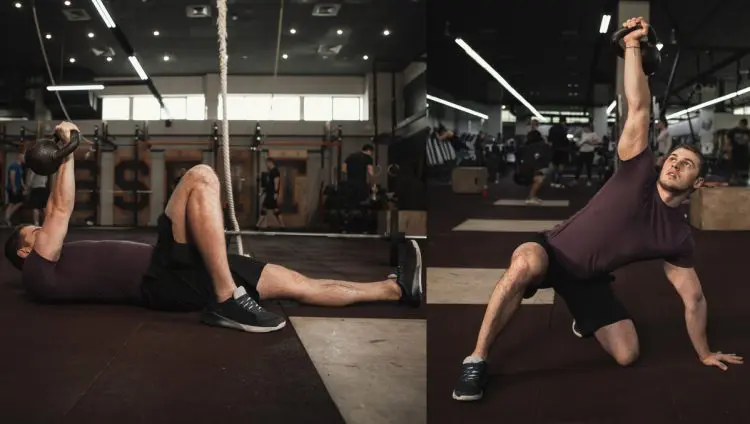
Steps:
- Lie down flat on the floor with a kettlebell placed on your chest
- Place your legs so that they each form a 45-degree angle with your body.
- Bend at your right knee and place your right foot on the floor.
- Place your left arm out to your side so that it forms a 45-degree angle with your torso. This will be your starting position.
- Keep your elbow and wrist locked throughout the exercise. Your knuckles should be pointing towards the ceiling.
- In one movement:
- Push off to your left with your right foot.
- Punch upward with the kettlebell.
- Forcefully press your left elbow into the floor so that your torso rises and your weight shifts onto the left forearm.
- Without letting your forearm or hand leave the floor, rotate your left hand so that your fingertips are pointing at a 45-degree angle away from your body. Press away from the floor with your left hand as you lift your forearm and lock out your elbow. This is called the T position.
- From the T position, raise your butt off the floor as you lift your left leg and pull it underneath you so that your left knee lands where you were previously sitting.
- From here, move to a half-kneeling position.
- Press your right foot into the floor and stand up.
- Return to the starting position.
- Switch sides and repeat.
WATCH: Russian Lifter Do A Turkish Getup With 198lbs Barbell
9. Low Lunge Twist With Reach
Steps:
- With your right leg forward, start in a forward lunge position.
- Drop your left knee to the floor.
- Place your right elbow on the inside of your right knee.
- Push your right elbow into your right knee then rotate your torso to the left.
- Reach back with your left arm until you feel a stretch in your lower back and right groin.
- Return to the starting position and switch sides.
10. Medicine Ball Rotational Throw
The Most Explosive Transverse Plane Exercise
Steps:
- Grab the med ball with both hands.
- Stand in a staggered stance with your right foot back.
- Hold the ball on your right side close to your right hip.
- Throw the ball explosively against a wall.
- As you throw, bring your back foot forward.
- While stepping into a staggered stance on the other side, catch the ball and bring it close to your left hip.
- Alternate between reps.
11. Stability Ball Kettlebell Torso Twist
Steps:
- Grab a kettlebell with both your hands.
- Lie down with your back on a stability ball.
- Your lower legs should be perpendicular to the floor.
- Press the kettlebell so that your arms are extended straight above your chest.
- Slowly rotate to your right side.
- Return to the starting position and repeat on the left side.
12. Single-Leg Hip Rotation
Steps:
- Stand with your feet placed shoulder-width apart.
- Extend your arms to your sides so that they are in a straight line.
- Lift your right knee in front of you until your upper leg is parallel to the floor.
- Open your hips by bringing your right knee out to the side.
- Return to the starting position and repeat on the left side.
13. Kettlebell Rotational Swing
Steps:
- Stand upright with your feet placed shoulder-width apart.
- Grab a kettlebell with both hands and hold it in front of your body.
- While twisting to your right side, lift the kettlebell over your head.
- Pivot your right foot and hip inwards while lifting the kettlebell.
- Maintain a slight bend in your elbows throughout the exercise.
- Return to the starting position and repeat on the right side.
14. Rotational Forearm Plank
Steps:
- Get into a planking position.
- Bring your forearms inward across your chest.
- While keeping your right arm on the floor, lift your left arm.
- At the top of the movement, your left arm should be extended straight towards the ceiling, and your chest should be perpendicular to your right forearm.
- Return to the starting position and repeat on the other side.
15. Plank Kettlebell Pull Through
Steps:
- Place a kettlebell on your right side.
- Get into a high plank position with your hands placed under your shoulders.
- Grab the kettlebell with your left hand and pull it through to your left side.
- Return to the starting position and repeat on the left side.
Conclusion
Add Transverse Movements To Your Workout Routine Today
A majority of lifters are content with doing a mixture of push and pull exercises in the sagittal and frontal planes. Designing a training plan around the three planes of motion might seem like a lot of work but is essential for the overall development of your physique.
Perform a combination of any three of these exercises twice a week to build core strength and reduce the chances of an injury.

